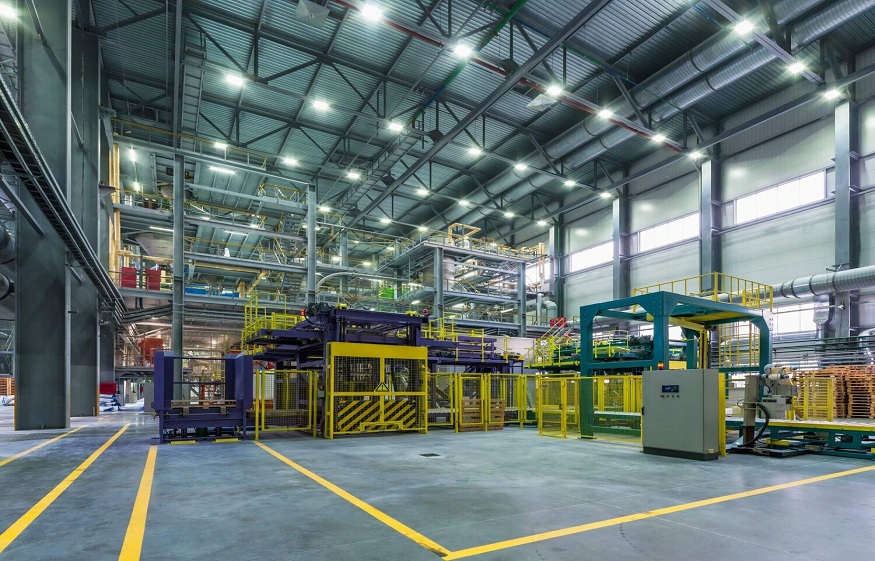When it comes to commercial warehouse construction, there are many factors to consider, but two of the most important are lighting and ventilation. Proper lighting and ventilation can make a huge difference in the productivity and safety of your facility. In this article, we will explore the importance of proper lighting and ventilation in your commercial warehouse, with a focus on aviation building construction.
Why Proper Lighting Matters
Lighting is essential in any workspace, but it’s especially crucial in a warehouse environment where employees need to be able to see what they’re doing. Poor lighting can lead to accidents and errors, as well as eye strain and fatigue. It can also make it difficult to find items and read labels, which can slow down productivity and lead to mistakes.
In aviation building construction, proper lighting is even more critical. Aircraft maintenance and repair require precision and attention to detail, which can only be achieved with the right lighting. Proper lighting can also help to prevent accidents, as it allows workers to see potential hazards and avoid them.
Types of Lighting for Commercial Warehouses
There are several types of lighting that are commonly used in commercial warehouses. These include:
- High-Intensity Discharge (HID) Lighting: HID lighting is a type of lighting that uses an electric arc to produce light. It’s commonly used in warehouses because it provides a lot of light and is energy efficient.
- Fluorescent Lighting: Fluorescent lighting is a type of lighting that uses a gas to produce light. It’s also energy efficient and is commonly used in warehouses because it provides a lot of light.
- LED Lighting: LED lighting is a type of lighting that uses light-emitting diodes to produce light. It’s becoming increasingly popular in warehouses because it’s very energy efficient and provides a lot of light.
When choosing the right type of lighting for your commercial warehouse, it’s important to consider factors like energy efficiency, cost, and the amount of light needed for your specific application.
The Importance of Proper Ventilation
Proper ventilation is just as important as proper lighting in a commercial warehouse. Ventilation helps to regulate the temperature and humidity levels in the facility, which can have a big impact on the comfort and safety of employees.
In aviation building construction, proper ventilation is particularly important. Aircraft maintenance and repair require the use of many chemicals and solvents that can be harmful if inhaled. Proper ventilation helps to remove these fumes from the air, which protects the health and safety of workers.
Types of Ventilation for Commercial Warehouses
There are two main types of ventilation that are commonly used in commercial warehouses:
- Natural Ventilation: Natural ventilation uses natural airflow to regulate the temperature and humidity levels in the facility. It’s often achieved through the use of vents, louvers, and windows.
- Mechanical Ventilation: Mechanical ventilation uses fans and other equipment to regulate the temperature and humidity levels in the facility. It’s often necessary in larger facilities where natural ventilation isn’t sufficient.
When choosing the right type of ventilation for your commercial warehouse, it’s important to consider factors like the size of the facility, the number of employees, and the specific application.
The Benefits of Proper Lighting and Ventilation
Proper lighting and ventilation offer many benefits to commercial warehouses. These include:
- Increased Productivity: Good lighting and ventilation can help to create a comfortable and safe workspace, which can increase productivity and reduce errors.
- Improved Safety: Proper lighting and ventilation can help to prevent accidents and injuries by reducing the risk of slips, trips, and falls.
- Better Health: Proper ventilation can help to remove harmful fumes and chemicals from the air, which protects the health and safety of employees.
- Energy Efficiency: Choosing the right lighting and ventilation systems can help to reduce energy costs and improve the sustainability of your facility.
The Impact of Lighting on Warehouse Productivity
Studies have shown that lighting has a direct impact on warehouse productivity. Poor lighting can lead to eye strain and fatigue, which can cause errors and slow down work. It can also make it difficult for workers to find items, leading to longer search times and reduced productivity. On the other hand, good lighting can increase accuracy, speed up work, and reduce errors. In fact, studies have shown that workers in well-lit environments can perform tasks up to 10% faster than workers in poorly lit environments.
Factors to Consider When Choosing Lighting for Your Warehouse
When choosing lighting for your commercial warehouse, it’s important to consider a few factors. One important factor is the color temperature of the lights. Lights with a color temperature of around 5000K (known as “daylight” or “cool white”) are best for warehouses, as they provide a bright, clear light that mimics natural daylight. It’s also important to consider the size and layout of your facility, as well as any specific lighting requirements for your industry or application.
Conclusion
Proper lighting and ventilation are crucial elements of commercial warehouse construction, especially in aviation building construction. By investing in proper lighting and ventilation, you can create a safe, comfortable, and efficient workspace that benefits both your employees and your bottom line.
Looking for a partner to design and construct a commercial warehouse or aviation building that prioritizes proper lighting and ventilation? Look no further than Coastal Steel Structures! Our team of experts can work with you to develop a custom solution that meets the unique needs of your facility, taking into account factors such as energy efficiency, cost, and size.





